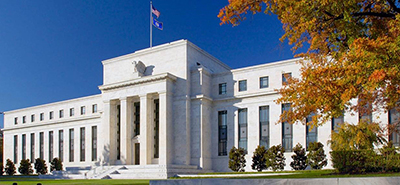
FOMC Cuts Rate 25 Basis Points; MBA Economist Weighs In

The Federal Reserve’s Federal Open Markets Committee cut the federal funds rate target by 25 basis points Oct. 29.
The cut is the second drop this year.
MBA SVP and Chief Economist Mike Fratantoni said the FOMC “met expectations” with the cut.
“The statement indicated that the Committee was more concerned about downside risks to the job market, although the last official data point was from August, hinting other data points showing further softening. Of note, there were two dissents to this rate cut decision, with Governor Miran preferring a 50-basis-point cut and Kansas City Fed president Schmid opting for no change in rates. MBA is forecasting another two 25-basis-point cuts to the federal funds target in December 2025 and then in the first quarter of 2026.
“The FOMC also announced that it would be ending quantitative tightening on December 1st, indicating that the overall balance sheet will no longer be shrinking. MBS prepayments and amortization will be rolled into Treasuries going forward.
“As these moves were anticipated by the market, MBA does not expect any significant changes to mortgage rates as a result. Mortgage rates are currently around their low for the year and this has spurred both refinance and purchase activity.”
Read the Federal Reserve Board’s full statement below:
Available indicators suggest that economic activity has been expanding at a moderate pace. Job gains have slowed this year, and the unemployment rate has edged up but remained low through August; more recent indicators are consistent with these developments. Inflation has moved up since earlier in the year and remains somewhat elevated.
The Committee seeks to achieve maximum employment and inflation at the rate of 2 percent over the longer run. Uncertainty about the economic outlook remains elevated. The Committee is attentive to the risks to both sides of its dual mandate and judges that downside risks to employment rose in recent months.
In support of its goals and in light of the shift in the balance of risks, the Committee decided to lower the target range for the federal funds rate by 1/4 percentage point to 3-3/4 to 4 percent. In considering additional adjustments to the target range for the federal funds rate, the Committee will carefully assess incoming data, the evolving outlook, and the balance of risks. The Committee decided to conclude the reduction of its aggregate securities holdings on December 1. The Committee is strongly committed to supporting maximum employment and returning inflation to its 2 percent objective.
In assessing the appropriate stance of monetary policy, the Committee will continue to monitor the implications of incoming information for the economic outlook. The Committee would be prepared to adjust the stance of monetary policy as appropriate if risks emerge that could impede the attainment of the Committee’s goals. The Committee’s assessments will take into account a wide range of information, including readings on labor market conditions, inflation pressures and inflation expectations, and financial and international developments.
Voting for the monetary policy action were Jerome H. Powell, Chair; John C. Williams, Vice Chair; Michael S. Barr; Michelle W. Bowman; Susan M. Collins; Lisa D. Cook; Austan D. Goolsbee; Philip N. Jefferson; Alberto G. Musalem; and Christopher J. Waller. Voting against this action were Stephen I. Miran, who preferred to lower the target range for the federal funds rate by 1/2 percentage point at this meeting, and Jeffrey R. Schmid, who preferred no change to the target range for the federal funds rate at this meeting.
